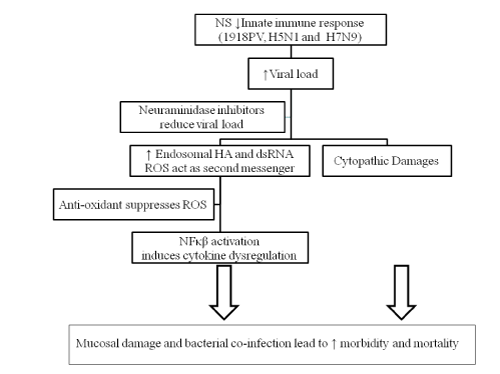
 |
| Figure 6: Influenza viruses (1918PV, H5N1 and H7N9) with potent innate immune response suppressing NS induce a heavy viral load which in turn leads to direct cytopathic damage and an accumulation of endosomal haemagglutinin (HA) and double-stranded RNA (dsRNA). ROS then acts as the second messenger for both dsRNA and HA induced NFκB activation to induce cytokine dysregulation. The cytopathic damage and cytokine dysregulation result in an enhanced morbidity and mortality. Either mechanism of tissue damage may predominate in an individual patient. Neuraminidase inhibitors reduce viral load. Anti-oxidant at a dose that can suppress endosomal ROS reduces influenza-induced cytokine dysregulation. This may explain the synergistic action of neuraminidase inhibitor and high-dose NAC in reducing mortality in mice with lethal influenza infection. |